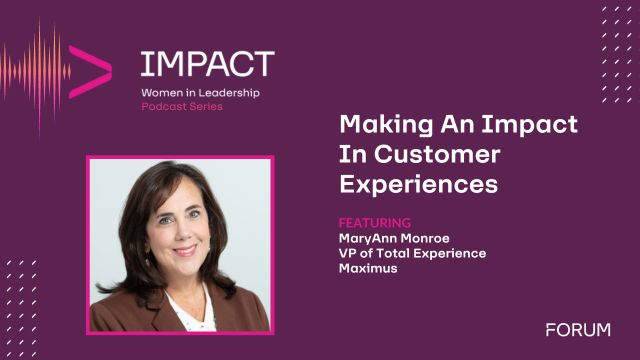In this interview with Perspecta’s Chief Technologist of its health business group, Bo Dagnall, FedHealthIT’s President, Susan Sharer, digs into the root causes of interoperability challenges, the use of FHIR as PART of the solution and what comes next.
Why is Interoperability an Issue and What is the Root Cause?
Among the many challenges, one key issue is that people receiving health care are mobile and travel getting their health care in different locations. For instance, a patient in the Military Healthcare system may receive care in numerous location as they are deployed around the globe, at sea and throughout our country. There are different health IT systems employed by different branches of the Military, and within different locations. As active Military Personnel move through their careers they leave a trail of medical records, some of which are digital, some not. This creates the challenge of figuring out how to bring together their disconnected, and sometimes complex medical history to enable informed, evidence-based decision-making and optimal Healthcare. Once they transition to the Department of Veterans Affairs (VA), these same medical records are needed to determine possible disability rating, ongoing benefits, and lifelong Healthcare plans.
After transition from Active Duty Service to Veteran status, a Veteran may receive care at numerous VA medical centers located around the country, each of which creates and contributes to yet another trail of medical records. Even with the common footing of Veterans Health Information Systems and Technology Architecture (VistA), records remain fragmented. This is compounded further when considering the VA outsources more than 50% of its care to private practitioners who use different technologies to collect patient information. This creates an untenable problem.
We refer to this issue as “care with boundaries” because it lacks continuity, and creates a challenge in treating long-term conditions. The patient suffers, and we struggle with a system that is both costly and ineffective.
Why Hasn’t the Interoperability Issue been Solved?
Healthcare sometimes lags behind other industries. Specifically, it hasn’t experienced the advantages of digitization like other industries, such as travel or banking. In part this is because health care is unique in the complexity and criticality of the data model itself. Standardizing the data so that it can be interoperable is difficult. Despite previous attempts over many years, data standardization as a precursor to interoperability is not yet complete.
We also have to recognize that the business model behind health IT has historically been disincentivized to focus on interoperability with the advantage pointed to hoarding and maintaining your customer base by locking up the data in proprietary databases with limited data sharing. Government incentives around interoperability (see the CMS Interoperability and Patient Access Rule) are starting to change the landscape but we still have a long way to go to catch up.
Why Hasn’t the Wide-Scale Rollout of Electronic Medical Records (EMR) and Meaningful Use Requirements Solved the Interoperability Problem?
Interoperability is not a binary thing. There are many degrees and shades of grey and different levels of interoperability. If all health providers used the same system with the same database, you may achieve data level interoperability, but that level of homogeneity comes at the cost of complete vendor lock with limited ability to evolve as things change. We are at the intersection of competing forces and the only constant is change.
EMRs can help by providing pockets of interoperability within a sphere of influence (e.g., a health delivery network), but we need to recognize that even with the same EMR, across a large organization, there are going to be unique data needs by different classes of users that challenge the common database approach and necessitate system level interoperability with application programming interfaces (API) to allow for communication across system boundaries using common standards everyone can agree on.
Is FHIR (Fast Health Interoperability Resources) the Solution to the Interoperability Problem?
FHIR allows for better ways of sharing data with specificity, ensuring that the receiving end understands and processes the data with the same amount of rigor and semantic intent as the sender. Leveraging modern technology and proven internet-based communication standards, FHIR is lightweight and easy to stand up which has driven rapid developer adoption.
However, FHIR alone can’t solve the complete interoperability problem. For complete interoperability, exchange partners need common APIs and exchange protocols, and need to be in agreement on medical terminology, information models, software services and capabilities, and the use and definition of knowledge assets (e.g., clinical decision support algorithms and analytics models). Interoperability also requires both a common trust infrastructure and common ways of identifying people. FHIR addresses many of these concerns and is a great step forward, but it doesn’t address all aspects of interoperability. Further, FHIR, like other standards, is not immune to the challenge that not everyone will move to the FHIR standard at the same time or be on the same version, so interoperability and modernization hurdles will always exist even when using FHIR. There are still more pieces to the puzzle beyond FHIR that need to be addressed to solve this problem.
What Additional Standards, Technologies and Architectures are Poised to Address Interoperability Problems?
There are several, including identity, a common trust infrastructure, knowledge standardization and interoperability, data granularity specifically as it pertains to free text and unstructured data, and process level interoperability whereby collaborating care providers work in concert as part of a shared workflow aligned to standardized and evidence-based clinical protocols.
First, identity is still a huge problem. We need to be able to identify (or infer identity) patients and other entities based on demographics and metadata derived from what we know about every person, provider and organization. To do that we need a common identity infrastructure built on privacy and security policies specific to health, and a commonly shared trust infrastructure that allows everyone to share with confidence, knowing it will be used for the right purpose and by the intended person or parties.
Second, we must address knowledge interoperability. When we think about medical knowledge, which is estimated to double every few years, we have to be able to capture the latest and greatest, and be able to enable knowledge sharing (e.g., sharing of algorithms for clinical decision support and analytics). Knowledge interoperability must be built on an economy that allows for a co-evolution of knowledge across and amongst many organizations. Interoperability of knowledge is critical for everyone to leverage a community approach to knowledge curation and delivery.
Third, data granularity and unstructured data must be addressed. Currently, up to 80% of all digital medical records still exist in unstructured format (e.g., scanned documents). These are great for understanding the story behind the patient, but are impractical to run data against. Natural language processing (NLP), data mining and optical character recognition (OCR) must evolve and be part of the journey to unlock the information in those medical record and physician notes. This will enhance data specificity and help with data granularity mismatches, which in turn, enhances the use of data communicated using FHIR.
Finally, we need to address interoperability of shared workflows and clinical processes. The interoperability continuum starts with syntactic interoperability (multiple systems understanding the same syntax), extends to semantic interoperability (understanding it from the same context with the same meaning and inference) and ultimately matures to process-level (workflow) interoperability (a common understanding from a process level to ensure continuity of business operations and processes across providers, systems and organizational boundaries). All three of these are critical for a person with a chronic condition that receives care in multiple organizations from multiple care providers using a variety of health IT systems. Process level interoperability helps to understand everyone’s role in the workflow and identifies where and how handoffs happen across the patient’s journey. Process-level interoperability is a whole other level of interoperability that goes beyond the data to focus on clinical processes and care delivery protocols.
How has Perspecta Addressed the Interoperability Challenges, and What is HealthConcourse?
HealthConcourseTM is a versatile architectural framework and “open” data interoperability digital health platform developed by Perspecta over the past few years (see www.perspecta.com/healthconcourse). Through HealthConcourseTM diverse and heterogeneous data is embraced, mapped and transformed into FHIR, adding in appropriate terminology references and leveraging services like identity matching, NLP and OCR to further enrich the data and make it more computable. PDFs and other documents are scanned and converted to text with key concepts identified and extracted into new FHIR resources. All of this optimizes data for computation and adds predictability for downstream decision support and analytics. HealthConcourse comes with a standards-based knowledge broker based on standards such as CDS-Hooks and the Clinical Quality Language that allows knowledge assets, delivered as microservices, to be plugged into the framework so that the knowledge algorithms and models can be processed against standardized, FHIR-based data in real-time. HealthConcourse also helps to automate business processes by ingesting and executing standardized clinical workflow models based on the Business Process Modeling for Healthcare (BPM+ for Health) standard and providing data and knowledge to the right person at the right time as described by the activities within these models. This allows the caregiver to focus on the patient, without spending their limited time on menial data gathering processes. HealthConcourse provides access to data, knowledge and workflow through common, standard-based APIs enabling other applications to use this information for their specific use cases.
What Does the Future of Interoperability Look Like?
We are still dealing with basic standardization. Much more can be done once we agree on a common language, syntax and grammar—and FHIR combined with controlled medical terminologies are a big step forward. But in addition, the future will need to be based on a knowledge economy, with knowledge as a key asset, and process-level interoperability appropriately addressed. The volume and types of new data influencing health care will also factor in such as the social determinants of health, genomics and all of the other “omics”. Embracing that larger data set to gather more comprehensive knowledge is key, but I suspect we’re maybe 10 years or more away from fully leveraging that information.
Standards development organizations like HL7 will continue to play a significant role defining and refining interoperability standards, but ultimately interoperability will move from a data exchange problem into a system cohesion problem where shared understanding, shared knowledge and shared business processes take shape. OMG is leading the way with the emerging BPM+ Health standards, which helps to define clinical business processes in a computable, standards-based way allowing for process interoperability and automation. Logica Health is taking this challenge from a platform perspective and from a service orientation perspective. They are focused on the common applications, services and shared infrastructure that enables interoperability and allows the participating applications and actors to use standards like FHIR in a cohesive manner. The work these organizations are doing will be an important part of the puzzle for moving industry forward.
In the future, we must consider interoperability as a platform and ecosystem problem, not just a data exchange problem. We can’t solve this problem by just having EMRs or FHIR or a single knowledge base or technology. Interoperability is a cohesion problem, a problem of bringing pieces together within a meaningful, well-defined architecture with shared infrastructure and platforms that use interoperability standards to achieve fluidity of data, knowledge and shared workflows that move us toward a state of “care without boundaries”.
Perspecta’s HealthConcourseTM
HealthConcourse is a versatile architecture/framework and “open” data interoperability platform, developed by Perspecta over the past 24 months. It has been designed to facilitate bidirectional access, aggregation, enhancement/enrichment, and secure delivery of data from a variety of sources thorough a standards based mechanism using modern APIs, FHIR resources and other standards, and data standardization, knowledge execution and process automation microservices to address care with boundaries and promote interoperability. HealthConcourseTM is multi-cloud-based (in both Azure and AWS; containerized through Docker and Openshift), fully operational, and continues to evolve as we learn through various virtual lab experiences, customer meetings and demonstrations, technology partnerships and integrations, and other discoveries. The HealthConcourse cloud-based sandbox uses active versions of VistA, Cerner, AllScripts, and other systems to demonstrate true EHR interoperability and extended capabilities enabled by the HealthConcourseTM platform. For more information, refer to www.perspecta.com/healthconcourse.
About Bo Dagnall
 Bo Dagnall is the Chief Technologist and Strategist for the Provider Segment of Perspecta’s Healthcare Group. Bo’s background is in health informatics and enterprise architecture. As a health informatician, Bo understand the unique data and information challenges in the Healthcare industry. Bo has experience with clinical terminologies, information models, healthcare standards (e.g., HL7, FHIR), decision support, knowledge management and analytics. As an enterprise architect, Bo is adept at understanding the big picture and aligning the pieces for an optimal solution. The combination of these two skill sets enables Bo to excel at understanding, delivering and overseeing healthcare related opportunities, technologies and solutions. Bo regularly engages with leaders both within Perspecta and in the industry at large in innovation around Healthcare interoperability, systems design, analytics, mobility, cloud and internet of things (IoT). With his depth of experience and understanding in the Healthcare space, Bo routinely presents at industry tradeshows and events speaking on the state of Healthcare IT, the use and adoption of standards, optimal solution architectures and emerging trends and technologies.
Bo Dagnall is the Chief Technologist and Strategist for the Provider Segment of Perspecta’s Healthcare Group. Bo’s background is in health informatics and enterprise architecture. As a health informatician, Bo understand the unique data and information challenges in the Healthcare industry. Bo has experience with clinical terminologies, information models, healthcare standards (e.g., HL7, FHIR), decision support, knowledge management and analytics. As an enterprise architect, Bo is adept at understanding the big picture and aligning the pieces for an optimal solution. The combination of these two skill sets enables Bo to excel at understanding, delivering and overseeing healthcare related opportunities, technologies and solutions. Bo regularly engages with leaders both within Perspecta and in the industry at large in innovation around Healthcare interoperability, systems design, analytics, mobility, cloud and internet of things (IoT). With his depth of experience and understanding in the Healthcare space, Bo routinely presents at industry tradeshows and events speaking on the state of Healthcare IT, the use and adoption of standards, optimal solution architectures and emerging trends and technologies.












